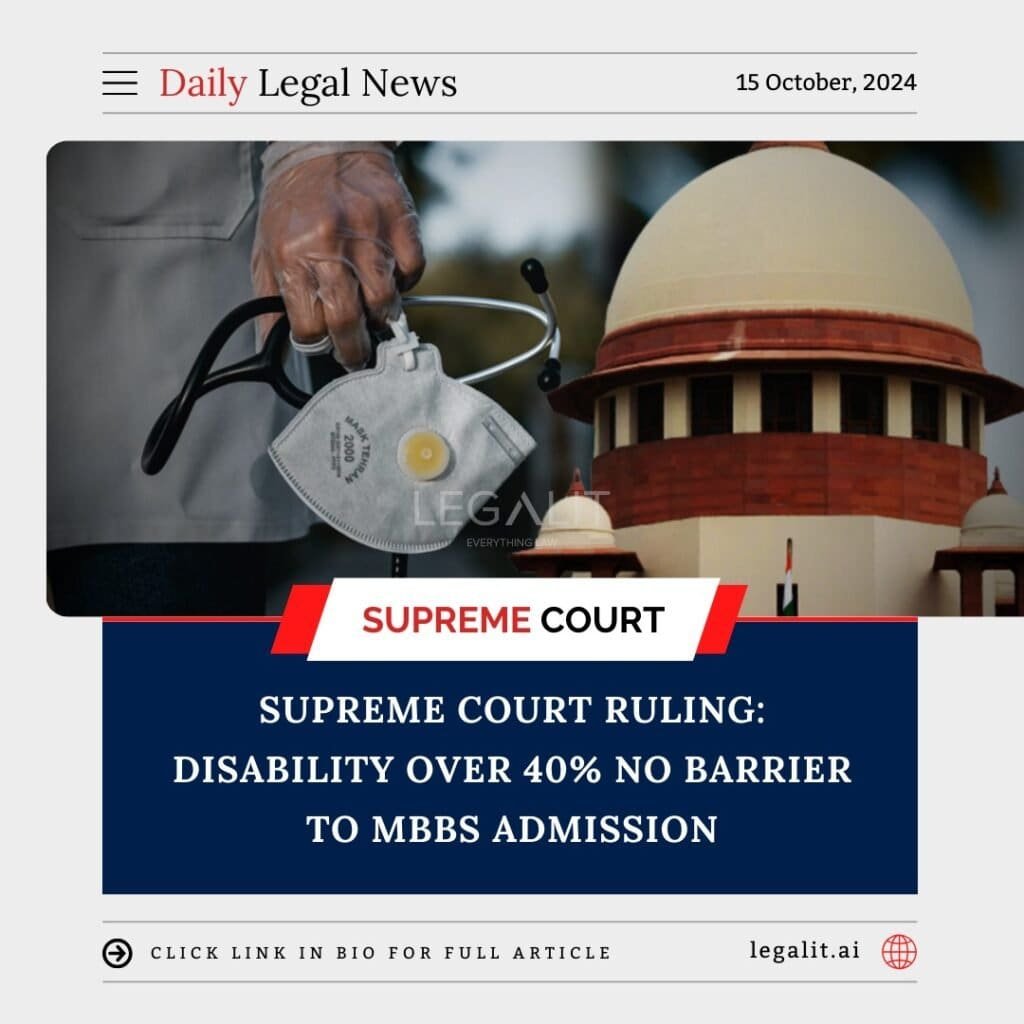
In a landmark decision, the Supreme Court of India has ruled that candidates with disabilities exceeding 40% cannot be barred from admission to MBBS courses. This ruling reaffirms the principle of inclusivity in medical education and addresses long-standing concerns about the eligibility criteria for candidates with disabilities.
Background of the Case
The case emerged from a challenge against the provisions that limited the admission of individuals with disabilities in medical programs. Historically, there have been stringent eligibility criteria that often discriminated against candidates with disabilities, effectively limiting their opportunities to pursue careers in medicine.
Court’s Ruling and Reasoning
The Supreme Court emphasized that the right to education is a fundamental right, and any discriminatory practice that hampers this right, especially for individuals with disabilities, is unconstitutional. The court noted that a disability exceeding 40% should not disqualify an individual from pursuing a career in medicine, particularly when they are otherwise qualified. This ruling aligns with India’s commitments under the Rights of Persons with Disabilities Act, 2016, and the United Nations Convention on the Rights of Persons with Disabilities.
Implications of the Judgment
- Access to Education: This decision significantly enhances access to medical education for candidates with disabilities, encouraging a more diverse and inclusive workforce in healthcare.
- Legal Precedent: The ruling sets a crucial legal precedent, reinforcing the idea that all individuals, regardless of physical challenges, should have equal opportunities in education and employment.
- Awareness and Advocacy: The ruling may lead to increased awareness and advocacy for the rights of disabled individuals in other sectors, promoting broader changes in societal attitudes toward disability.
Need for Reforms
While the ruling marks a significant step forward, there is an ongoing need for comprehensive reforms in educational institutions to accommodate students with disabilities fully. This includes improved infrastructure, training for faculty on inclusivity, and the implementation of supportive measures to ensure that these students can thrive in their chosen fields.
Conclusion
The Supreme Court’s ruling on MBBS admissions for candidates with disabilities exceeding 40% is a critical development in the fight for equality and inclusivity in education. It not only paves the way for more diverse medical professionals but also reinforces the need for systemic changes to support disabled individuals in all walks of life.